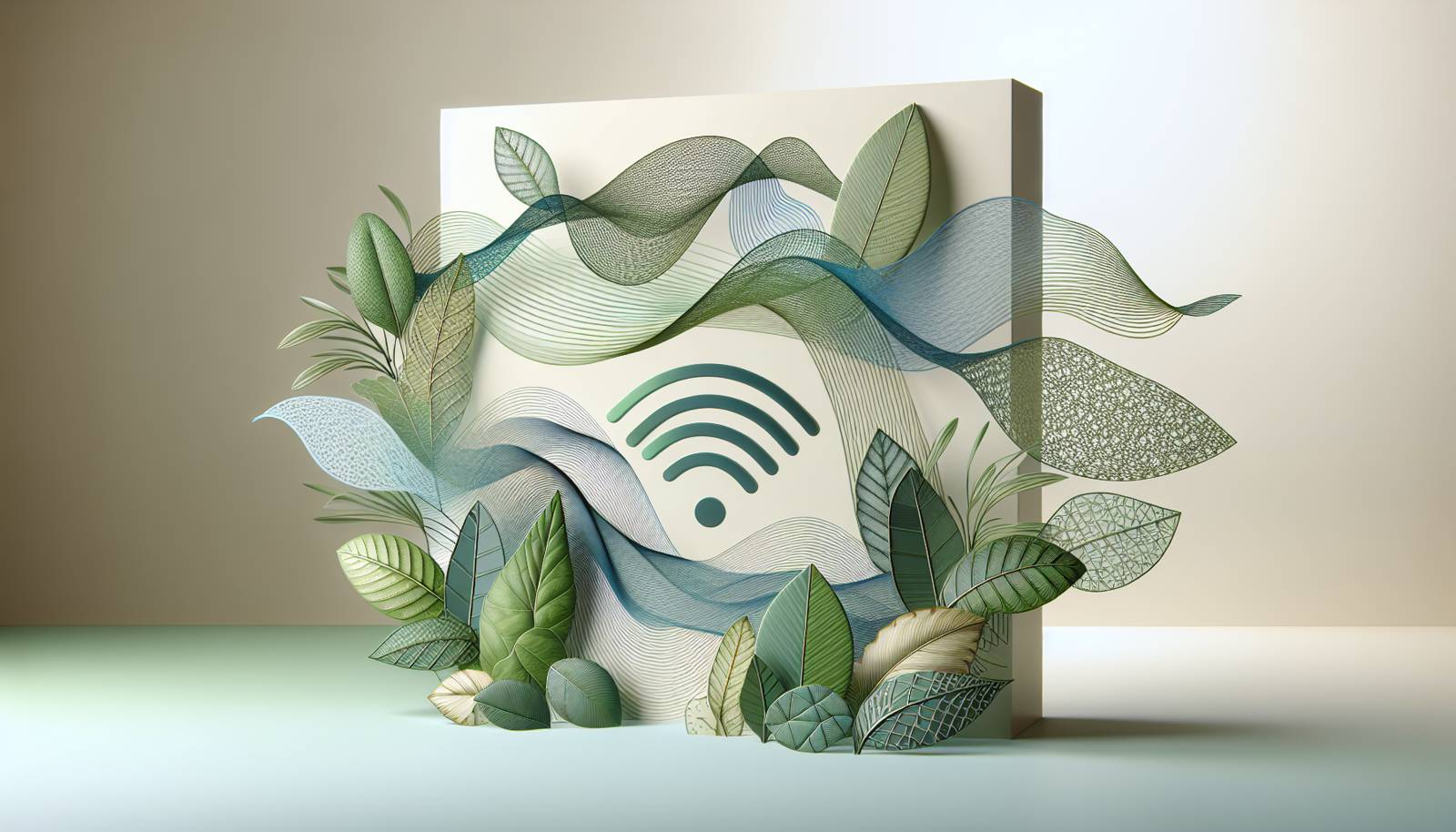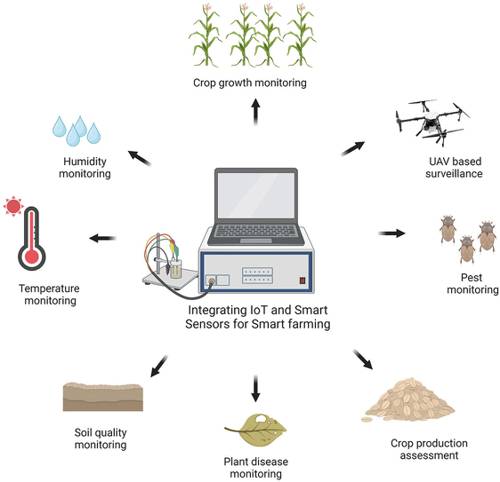
FAQ About Indoor Plant Wireless Monitoring Devices

What are indoor plant wireless monitoring devices?
Indoor plant wireless monitoring devices are tools designed to assist in managing the health of indoor plants by providing real-time data on environmental conditions. These devices typically measure factors such as temperature, humidity, light, and soil moisture levels and transmit this data wirelessly to a smartphone app or computer. By utilizing these devices, plant owners can ensure optimal growing conditions and proactively address issues that may affect plant health.

How do wireless monitoring devices help in maintaining plant health?
Wireless monitoring devices help maintain plant health by offering continuous tracking of essential environmental parameters like temperature, humidity, and soil moisture. This data allows plant owners to quickly adjust conditions to suit specific plant needs, thereby reducing the risk of diseases or stress caused by unsuitable conditions. For example, if the device detects low moisture levels in the soil, it can alert the owner to water the plant, preventing dehydration and wilting.

What features should I look for in a wireless monitoring device for indoor plants?
When selecting a wireless monitoring device for indoor plants, look for features such as multi-sensor capabilities to measure temperature, humidity, light, and soil moisture. Additionally, consider the device's compatibility with your smartphone's operating system, ease of setup, app interface usability, and whether it provides alerts and detailed insights. Battery life and connectivity range are also important factors, especially if you have a large number of plants or a larger indoor space.

Can wireless monitoring devices be used for all types of indoor plants?
Wireless monitoring devices can be used for most types of indoor plants, as they provide the necessary environmental data that can be crucial for a wide variety of plants. However, the utility of these devices may vary depending on the specific needs of certain plants. Some plants that require more precise conditions may benefit greatly from such monitoring, while others that are more hardy might not need continuous monitoring.

How does a wireless monitoring device transmit data?
Wireless monitoring devices typically transmit data via Bluetooth, Wi-Fi, or specialized wireless protocols to a connected smartphone or computer application. Bluetooth devices usually require proximity to the connected device, while Wi-Fi-enabled devices can send data over longer distances, allowing you to access real-time information without being near the plants. The specific method used will depend on the device's design and your network setup.

Are there any maintenance requirements for indoor plant wireless monitoring devices?
Yes, wireless monitoring devices require basic maintenance to function optimally. This includes ensuring that the device's battery is regularly charged or replaced, cleaning sensors to avoid dust buildup that might affect readings, and keeping the device's software updated for improved functionality and security. Regular checks ensure that the data remains accurate and reliable.

Do wireless monitoring devices for plants require a subscription service?
Whether a wireless monitoring device requires a subscription service depends on the brand and model. Some devices offer basic functionalities for free while providing additional features through a subscription-based model, like cloud storage, advanced analytics, or integration with home automation systems. Be sure to check the manufacturer's offerings to understand the costs involved thoroughly.

Can multiple devices be used in a single indoor space?
Yes, multiple wireless monitoring devices can be used within a single indoor space, which can be beneficial if you have a large collection of plants or diverse plant needs. Using multiple devices allows you to tailor monitoring and care more precisely to individual plants or different sections of your indoor garden, ensuring that all plants receive the attention they need according to their specific requirements.

Are there compatibility issues to consider when setting up a wireless monitoring system?
When setting up a wireless monitoring system, consider compatibility between the device, your smartphone's operating system, and any other smart home technologies you might be using. Ensure that the device’s app is available on your smartphone platform (iOS or Android) and that it can integrate with products like smart speakers or automation systems if desired.

What is the average price range for indoor plant wireless monitoring devices?
The price range for indoor plant wireless monitoring devices can vary significantly based on features and brand. Basic devices might cost around $20 to $50, while high-end models with multiple sensors, a robust app, and additional functionalities could range from $100 to $200 or more. It is advisable to balance cost with features, considering the specific needs of your indoor plants.

How accurate are the measurements from indoor plant wireless monitoring devices?
The accuracy of measurements from wireless monitoring devices generally depends on the build quality and technology used by the manufacturer. While most modern devices provide fairly accurate readings of temperature, moisture, humidity, and light levels, it’s advisable to check reviews and professional tests to determine their reliability. In some cases, environmental interference or sensor placement can affect accuracy, so installing the device correctly is key.

Can wireless monitoring devices be used outdoors for plants?
While primarily designed for indoor use, some wireless monitoring devices may be suitable for outdoor use depending on their durability and sensor capabilities. Check the device specifications for weatherproofing or outdoor compatibility. Ensure the device's connectivity range is appropriate for outdoor environments since greater distances and obstructions could affect wireless communication.

Do indoor plant wireless monitoring devices work with voice assistants?
Some wireless monitoring devices for indoor plants can integrate with voice assistants like Amazon Alexa or Google Assistant. Such integration enables users to receive updates and control their devices via voice commands, enhancing ease of use. However, this capability depends on the specific device and its compatibility with smart home ecosystems.

What are the limitations of indoor plant wireless monitoring devices?
Limitations of indoor plant wireless monitoring devices include dependency on battery power or frequent recharging, potential connectivity issues in areas with poor Wi-Fi or Bluetooth coverage, and the initial cost of purchasing the device. Additionally, these devices may not be compatible with all types of plants, particularly those with less common environmental needs. Regular maintenance is also required to ensure continued accuracy.

How do wireless monitoring devices alert users about plant needs?
Wireless monitoring devices alert users about plant needs through notifications sent directly to a connected smartphone or tablet via a dedicated app. These alerts might include warnings about low soil moisture, unsuitable temperature, or humidity levels, enabling plant owners to take swift action. Some devices also offer detailed insights through analytics, helping users understand long-term trends and make informed decisions.

Are there eco-friendly options for wireless monitoring devices?
Yes, there are eco-friendly options available in the market. Several manufacturers focus on creating devices with recyclable materials, energy-efficient operations, and minimal electronic waste. Look for devices that include solar power capabilities or those made from sustainable materials if environmental impact is a concern.

How often do I need to check the readings from my monitoring device?
The frequency of checking readings from your monitoring device depends on the type of plants you have and their specific needs. Regular monitoring, such as daily or every few days, is recommended to promptly address any changes in plant conditions. For plants with less stringent care requirements, checking once a week may suffice. The app's automated alerts can also guide you on when to take action.

Can wireless monitoring devices control my indoor plant environment automatically?
Some advanced wireless monitoring devices can be integrated with automatic indoor plant care systems. These might include automated irrigation systems or climate control systems that adjust based on the data received from the monitoring device. This integration enables a fully automated plant care setup where the device triggers environmental adjustments without manual intervention.

Do I need any technical skills to set up a wireless monitoring device for indoor plants?
Setting up a wireless monitoring device for indoor plants typically requires basic technical skills. Most devices come with straightforward instructions and user-friendly apps that guide you through the installation and setup process. However, understanding your home’s Wi-Fi or Bluetooth settings and how to install apps on your smartphone or tablet will be helpful.

What should I do if my wireless monitoring device stops working?
If your wireless monitoring device stops working, try troubleshooting by checking the battery level or whether the device is properly charged. Ensure it is connected to the app and that your smartphone’s Bluetooth or Wi-Fi is functional. Restarting the device or app can sometimes resolve common connectivity issues. If problems persist, consult the user manual or contact the manufacturer's support for further assistance.
